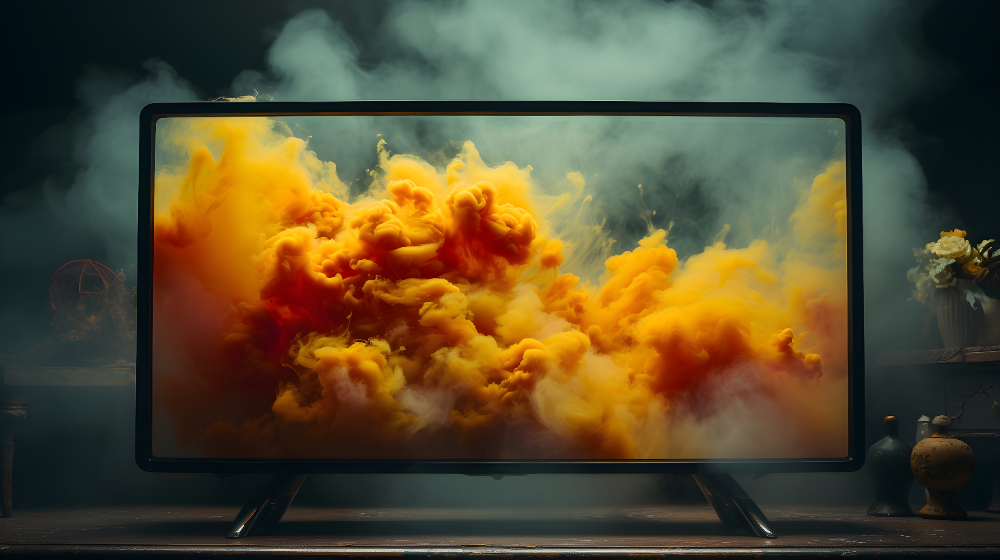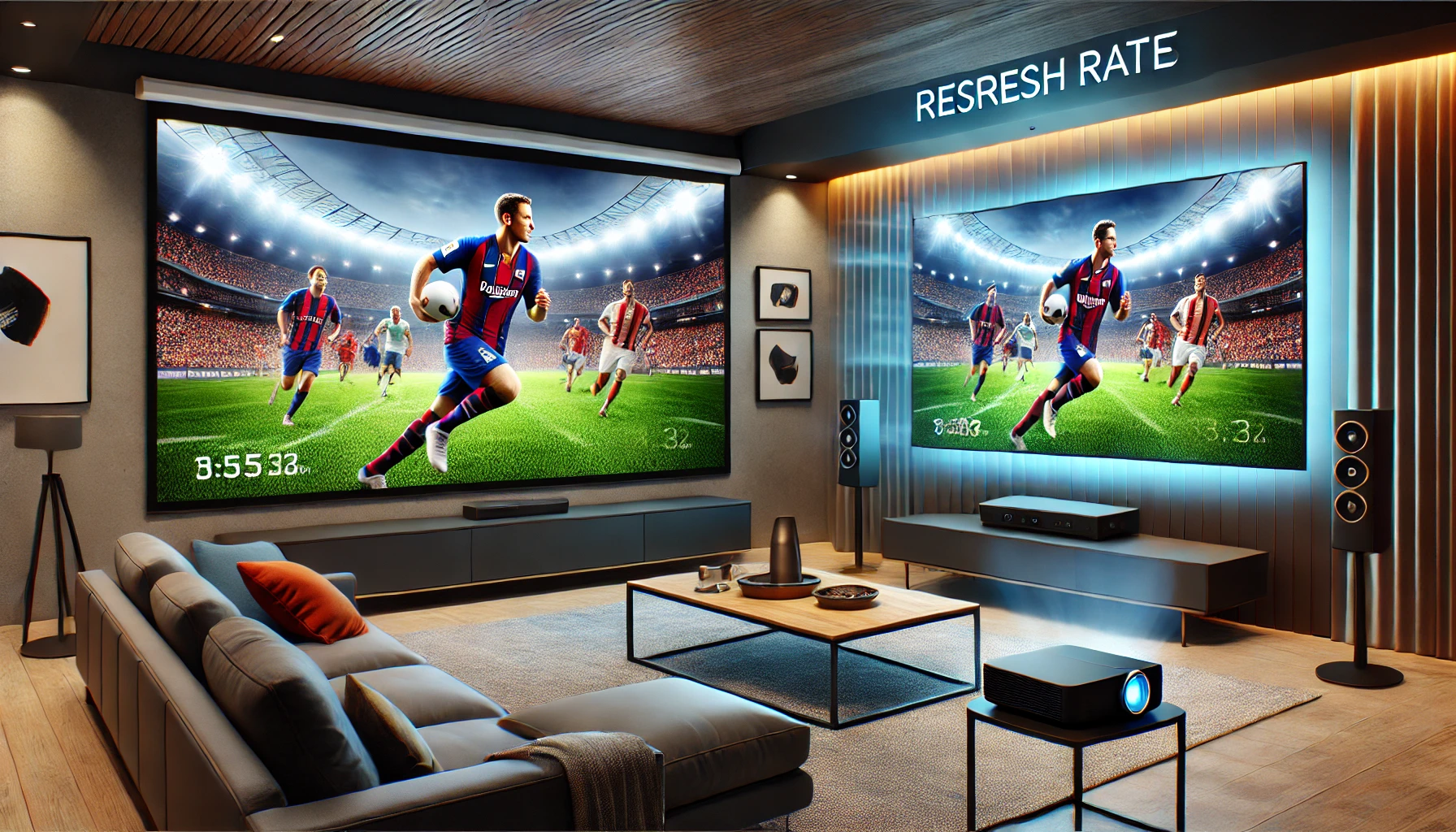8K TVs boast stunning resolution, featuring over 33 million pixels that enhance clarity and detail, especially on large screens. However, their worth largely hinges on content availability and price. While 8K offers a sharper image, there’s still limited native content across streaming platforms, making it hard to fully capitalize on the technology. Plus, with high costs and minimal gaming support, many find 8K TVs aren’t necessary yet. If you’re weighing whether to invest, understanding these factors can guide your decision on if the hype truly aligns with your viewing needs. There’s more to ponder as the landscape evolves!
Key Takeaways
- Exceptional Picture Quality: 8K TVs offer unmatched clarity and detail, ideal for larger screens and optimized content, enhancing the overall viewing experience.
- Limited Content Availability: Currently, 8K content is scarce on major streaming platforms, which may deter potential buyers seeking diverse viewing options.
- High Price Tag: The cost of 8K TVs often exceeds several thousand dollars, leading to skepticism about their value compared to more affordable 4K models.
- Viewing Distance Impact: The benefits of 8K resolution diminish at greater viewing distances, making it less advantageous in smaller rooms.
- Future Potential: As 8K technology becomes mainstream, prices are expected to drop, along with an increase in available content, enhancing its appeal.
Understanding 8K Resolution
When it comes to understanding 8K resolution, it’s crucial to grasp the numbers behind the hype. At its core, 8K resolution boasts a staggering 7680 x 4320 pixels, totaling over 33 million pixels on your screen. This is four times the pixel count of 4K and sixteen times that of 1080p. But what does this really mean for you?
The increased pixel density allows for sharper images, particularly on larger displays. As display technology evolves, higher resolutions like 8K can enhance your viewing experience by delivering finer details that were previously unnoticeable. This capability becomes especially evident when you’re watching high-quality content that’s been optimized for 8K, making the most of that pixel density.
However, it’s important to recognize that simply having more pixels doesn’t automatically translate to a better viewing experience. Factors like the quality of the display technology, the source material, and your viewing distance all play critical roles. Ultimately, understanding these elements will help you decide if investing in an 8K TV is worth it for your specific needs and preferences.
Advantages of 8K TVs
With the rise of 8K TVs, you might be wondering what advantages they bring to the table. One of the most significant benefits is the remarkable picture quality. Thanks to the increased resolution, 8K TVs offer enhanced detail that makes every scene come to life. When you watch content in 8K, you’ll notice finer textures, sharper lines, and a more immersive viewing experience.
Here’s a quick comparison of the advantages:
| Advantage | Description |
|---|---|
| Picture Quality | Exceptional clarity and realism |
| Enhanced Detail | Fine textures and subtle nuances |
| Larger Screen Compatibility | Maintains quality on bigger screens |
| Future-Proofing | Ready for upcoming 8K content |
| Enhanced Upscaling | Improves lower resolution content |
Investing in an 8K TV means you’re preparing for the future. As more content becomes available in 8K, you’ll be ready to enjoy it in all its glory. Plus, even non-8K content benefits from superior upscaling, making your viewing experience consistently enjoyable. In short, 8K TVs provide a compelling upgrade for those seeking the best in home entertainment.
Limitations and Drawbacks
While 8K TVs boast impressive technology, there are significant limitations to evaluate. You might find that the high price tag and the lack of available content can make it hard to justify the investment. Plus, as screen sizes increase, the benefits of 8K resolution can diminish, leading to questions about whether you really need all that extra detail.
Limited Content Availability
How often do you find yourself frustrated by the limited selection of 8K content available? Despite the buzz surrounding 8K TVs, the reality is that content creation hasn’t kept pace with market demand. While some streaming services have begun to offer 8K options, the overall library remains sparse. This lack of content can leave you wondering if your investment is really worth it.
Consider these points:
- Limited Streaming Options: Major platforms like Netflix and Amazon Prime still have minimal 8K offerings.
- Few Physical Releases: Blu-rays and other physical media in 8K are almost non-existent, making it hard to find quality content.
- Gaming Limitations: While some next-gen consoles can output 8K, the actual game titles that support it are still rare.
- Future Uncertainty: With technology evolving, it’s hard to predict when or if more 8K content will become available.
In a nutshell, while 8K TVs promise stunning visuals, the lack of content can be a significant drawback. Until more creators embrace this resolution, you might feel like you’re left with an underutilized display.
High Price Tag
The hefty price tag of 8K TVs often raises eyebrows, especially when comparing them to their 4K counterparts. With prices frequently exceeding several thousand dollars, it’s no wonder that consumer perception leans toward skepticism. You might wonder if the additional investment is truly justified, particularly when 4K models already deliver impressive picture quality.
The high price of 8K TVs can be attributed to advanced technology and manufacturing costs, but this doesn’t always translate to a noticeable improvement in viewing experience. In fact, the limited availability of native 8K content means you’re often upscaling lower-resolution sources, which may not showcase the full potential of your investment.
Moreover, the market is flooded with 4K options that offer excellent performance at a fraction of the cost. This disparity can lead to frustration, making you question if now is the right time to invest in 8K technology. Ultimately, while 8K TVs promise cutting-edge features, the high price tag may not align with the current viewing landscape, leaving you to weigh the value against your own entertainment needs.
Diminished Returns on Size
Many consumers believe that bigger is always better, but when it comes to 8K TVs, you might find that larger screen sizes don’t necessarily provide the expected visual benefits. This is largely due to the concept of diminished returns on size, where factors like size perception and viewing distance play significant roles in your overall visual experience.
Consider these points:
- Viewing Distance: The farther you sit from the screen, the less benefit you’ll gain from a larger size.
- Room Size: In smaller rooms, a massive TV can overwhelm the space, impacting your enjoyment.
- Screen Resolution: Higher resolutions like 8K shine at larger sizes, but the difference may be negligible unless you’re sitting close.
- Content Quality: Not all content supports 8K resolution, making the advantages of a larger screen less noticeable.
Ultimately, while larger screens can enhance your viewing experience, they won’t always translate to better quality. It’s important to balance room size, viewing distance, and the quality of the content you watch to maximize your enjoyment of an 8K TV.
Current 8K Content Availability
When considering an 8K TV, it’s essential to look at the current content landscape. While some streaming services are starting to offer 8K options, the selection remains limited, and not all gaming consoles support 8K resolution yet. Plus, with a few upcoming film releases on the horizon, the true potential of 8K may still be just around the corner.
Streaming Services Offering 8K
As 8K TVs gain traction in the market, the availability of 8K content on streaming services is becoming an essential consideration for potential buyers. You might be wondering which streaming platforms currently offer 8K content and how to guarantee content compatibility with your new TV. While 8K content is still limited, some prominent platforms are embracing this technology.
Here’s a quick look at what’s available:
- Netflix: Offers select titles in 8K, primarily nature documentaries and original films.
- YouTube: A variety of user-generated content and some professional videos are available in 8K.
- Amazon Prime Video: Includes a handful of 8K titles, especially in its original programming.
- Vimeo: Features some 8K content, focusing on artistic and high-quality video submissions.
When considering an 8K TV, keep an eye on the evolving landscape of streaming services. As more platforms begin to expand their libraries, you’ll find better content compatibility. While the current selection may not be vast, the momentum behind 8K content is growing, promising more options in the near future.
Gaming With 8K Support
The rise of 8K TVs has ignited interest in gaming experiences that can fully leverage this stunning resolution. But before you immerse yourself in the world of 8K gaming, it’s vital to evaluate current content availability and console compatibility. At this stage, while some high-end gaming PCs can push out 8K graphics, mainstream consoles like the PlayStation 5 and Xbox Series X are still primarily optimized for 4K.
Currently, the number of native 8K games is limited, and many titles that claim 8K support often upscale from lower resolutions. This means you might not see a drastic improvement in gaming performance unless developers begin creating games specifically designed for 8K.
Moreover, even if you have an 8K TV, you’ll need to verify your console can handle the output. HDMI 2.1 ports are essential for 8K gaming, which may not be standard on all devices. So, while the allure of 8K gaming is enticing, be aware that the ecosystem is still evolving. If you’re not ready to invest in the latest tech, you might be better off enjoying the excellent performance of 4K gaming for now.
Upcoming 8K Film Releases
Anticipating the future of cinema, many film enthusiasts are enthusiastic to see how upcoming 8K releases will reshape the viewing experience. As technology advances, filmmakers are increasingly embracing this resolution, promising enhanced clarity and detail that can elevate storytelling. You might be wondering how this will impact your movie nights, especially with the wave of upcoming blockbusters on the horizon.
Here are some anticipated 8K film releases to keep an eye on:
- Epic Sci-Fi Adventures: Expect visually stunning worlds that fully exploit 8K’s capabilities.
- Animated Features: These films will showcase vibrant colors and intricate details, making every frame a work of art.
- Nature Documentaries: Experience breathtaking landscapes and wildlife in unparalleled realism.
- Classic Remasters: Reimagined classics will offer a fresh perspective on beloved stories.
Cinematic innovations like these are not just about resolution; they’re about creating immersive experiences that draw you deeper into the narrative. As these films hit theaters and streaming platforms, you’ll likely find yourself captivated by the richness of 8K. Are you ready to embrace this new era of filmmaking?
Price Comparison With 4K TVS
When comparing 8K TVs to their 4K counterparts, price is a crucial factor that can’t be overlooked. Currently, 8K models are generally more expensive than 4K TVs, reflecting the advanced technology and higher resolution they offer. While 4K TVs have become increasingly affordable due to widespread adoption, 8K TVs still carry a premium price tag.
You’ll notice that price trends for 8K TVs are influenced by several factors, including brand, screen size, and features. For example, high-end brands might charge considerably more for their 8K offerings, while other brands may provide competitive pricing. As 8K technology becomes more mainstream, we could see prices start to drop, similar to the trajectory that 4K TVs experienced over the years.
If you’re on a budget, 4K TVs currently offer excellent value, especially with the growing availability of 4K content. However, if you’re looking for the latest technology and have the means to invest, an 8K TV might be worth considering. Ultimately, your choice should align with your viewing habits and how much you value the leap in resolution.
Future of 8K Technology
As consumers increasingly embrace higher resolution displays, the future of 8K technology looks promising yet complex. While 8K TVs offer stunning visuals, the path ahead is shaped by several factors, including future advancements and industry trends. Here’s what you can expect:
- Content Availability: As more streaming platforms and production companies adopt 8K, the demand for compatible content will grow.
- Display Technology Improvements: Innovations in OLED and MicroLED technologies may enhance picture quality, making 8K more appealing.
- Pricing Trends: As manufacturing processes improve and competition increases, the price of 8K TVs is likely to decrease, making them more accessible.
- Consumer Adoption: As awareness and appreciation for higher resolutions expand, more consumers may consider upgrading their viewing experience.
It’s essential to keep an eye on how these industry trends develop. With the rapid pace of technological advancements, 8K may not just be a niche product but a standard in the near future. As you think about your next TV purchase, consider these factors to understand how 8K technology fits into your viewing habits and lifestyle.
Making the Right Choice
Choosing the right 8K TV can feel overwhelming, given the myriad of options available on the market today. With various brands and features, it’s crucial to narrow down your choices based on your viewing habits and preferences. Two critical factors to contemplate are picture quality and screen size.
Here’s a simplified comparison to help you evaluate:
| Feature | High-End Model | Budget Model |
|---|---|---|
| Picture Quality | Superior color accuracy | Decent but less vibrant |
| Screen Size | 75 inches and above | 55-65 inches |
| Connectivity | Multiple HDMI 2.1 ports | Standard HDMI ports |
When selecting an 8K TV, prioritize picture quality first. A higher-quality panel will deliver more lifelike images, which is particularly beneficial for large screen sizes. You’ll want to verify that your room can accommodate the screen size you choose without compromising viewing distance or comfort.
Ultimately, it’s about finding the balance between your budget and the features that matter most to you. Take your time to compare, and you’ll make a choice that enhances your viewing experience.
Frequently Asked Questions
How Do 8K TVS Compare to OLED and QLED Technologies?
When comparing 8K TVs to OLED and QLED, you’ll notice significant resolution differences. While 8K offers higher pixel density, OLED excels in color accuracy and contrast, making it a compelling choice for vibrant visuals.
Can I Upscale 4K Content to 8K Quality?
Yes, you can upscale 4K content to 8K quality using various upscaling methods. However, the effectiveness largely depends on your TV’s technology and the content availability, which may vary in resolution and clarity.
What Brands Are Leading in 8K TV Production?
You might be curious about which brands dominate 8K TV production. Samsung innovations, LG advancements, Sony technology, and TCL competition lead the way, each pushing boundaries to enhance your viewing experience with stunning clarity.
Are There Specific Viewing Distances Recommended for 8K TVS?
For an ideal viewing experience with 8K TVs, you should sit closer than with lower resolutions. Generally, a distance of 1.5 feet per screen inch maximizes clarity and detail, enhancing your overall enjoyment.
How Do 8K TVS Impact Gaming Performance and Experience?
Did you know that 8K TVs can potentially enhance gaming frame rates by up to 60%? However, be cautious of input lag, which might affect your gaming experience and require a compatible setup for peak performance.
Conclusion
In the world of tech, “Don’t judge a book by its cover” rings true for 8K TVs. While they boast stunning resolution and future-proofing potential, the limited content and high price tag may leave you questioning their value. If you’re an early adopter craving cutting-edge tech, they might be worth it. However, if you’re content with 4K, you might want to hold off until 8K becomes more mainstream and affordable. Your choice should fit your viewing habits and budget.






